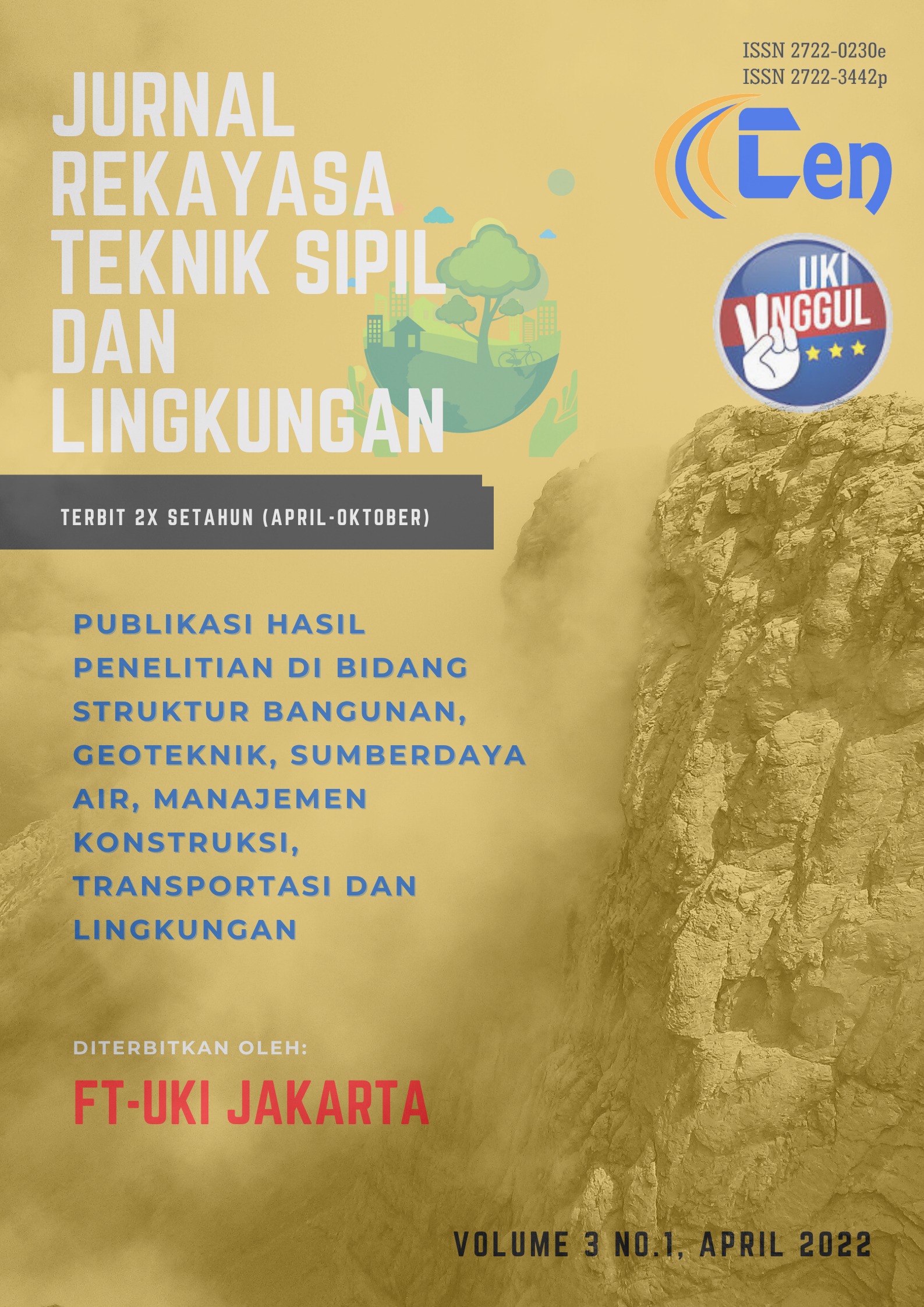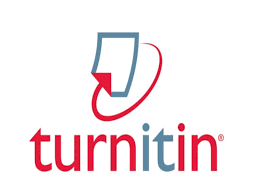PENGARUH VARIASI AGREGAT KASAR PENYUSUN BETON POROUS TERHADAP KUAT TEKAN DAN POROSITAS BETON
DOI:
https://doi.org/10.33541/cen.v3i1.3966Kata Kunci:
Beton porous, daerah resapan air, kuat tekan, infiltrasiAbstrak
Penggunaan beton tradisional yang berkelanjutan telah menghasilkan lapisan kedap air yang lebih tebal, mencegah air hujan masuk ke tanah dan meningkatkan limpasan permukaan. Akibatnya, permukaan air turun selama musim hujan, dan banjir terjadi. Salah satu inovasi untuk mengantisipasi atau mengatasi permasalahan tersebut adalah dengan menggunakan material terbarukan seperti beton aerasi. Perkerasan beton permeabel dimaksudkan untuk mengurangi genangan air di jalan. Dengan menghilangkan agregat halus, beton berpori menjadi sederhana, beton ringan. Rongga yang saling berhubungan menghasilkan tingkat porositas yang tinggi. Beton berpori biasanya memiliki sedikit atau tidak ada agregat halus dan pasta semen yang cukup untuk melapisi permukaan agregat kasar. Karena porositas yang meningkat, kuat tekan beton yang tidak diampelas lebih rendah daripada beton normal konvensional. Beton bebas pasir memiliki kekuatan tarik dan lentur yang jauh lebih rendah daripada beton konvensional. Dalam penelitian ini digunakan dua agregat kasar dengan ukuran nominal maksimum 12,5 mm dan 6,7 mm sebagai batuan split dengan bobot masing-masing 1,123 kg/m3 dan 2,63 kg/m3. Faktor air semen (FAS) 0,35 dan volume air 0,35 kg menggunakan semen Portland tipe 1 dengan kuantitas 389,6 kg/m3. Benda uji berupa silinder beton dengan diameter 80 mm dan tinggi 16 mm. Setelah mencelupkan benda uji ke dalam bak berisi air, masing-masing campuran memiliki tiga benda uji.
Referensi
ASTM D448-03a. (2012). Standard Classification for Sizes of Aggregate for Road and Bridge Construction. ASTM International.
Committee, A. C. I. (2006). ACI 522R-06. In Concrete Construction - World of Concrete.
Kant Sahdeo, S., Ransinchung, G. D., Rahul, K. L., & Debbarma, S. (2020). Effect of mix proportion on the structural and functional properties of pervious concrete paving mixtures. Construction and Building Materials. https://doi.org/10.1016/j.conbuildmat.2020.119260
Sonebi, M., Bassuoni, M., & Yahia, A. (2016). Pervious concrete: Mix design, properties and applications. RILEM Technical Letters. https://doi.org/10.21809/rilemtechlett.2016.24
Azadgoleh, M. A., Mohammadi, M. M., Ghodrati, A., Sharifi, S. S., Palizban, S. M. M., Ahmadi, A., Vahidi, E., & Ayar, P. (2022). Characterization of contaminant leaching from asphalt pavements: A critical review of measurement methods, reclaimed asphalt pavement, porous asphalt, and waste-modified asphalt mixtures. Water Res, 219, 118584. https://doi.org/10.1016/j.watres.2022.118584
Bai, E. L., Xu, J. Y., Lu, S., Lin, K. X., & Zhang, Y. M. (2018). Comparative study on the dynamic properties of lightweight porous concrete. RSC Adv, 8(26), 14454-14461. https://doi.org/10.1039/c8ra00082d
Bukhtoiarov, A. P. (1970). [Hygienic characteristics of fast filters with a porous concrete drainage system]. Gig Sanit, 35(12), 88-89. https://www.ncbi.nlm.nih.gov/pubmed/5509434 (K gigienicheskoi kharakteristike skorykh fil'trov s poristobetonnoi drenazhnoi sistemoi.)
Elizondo-Martinez, E. J., Andres-Valeri, V. C., Rodriguez-Hernandez, J., & Castro-Fresno, D. (2019). Proposal of a New Porous Concrete Dosage Methodology for Pavements. Materials (Basel), 12(19). https://doi.org/10.3390/ma12193100
Lee, B. J., Prabhu, G. G., Lee, B. C., & Kim, Y. Y. (2016). Eco-friendly porous concrete using bottom ash aggregate for marine ranch application. Waste Manag Res, 34(3), 214-224. https://doi.org/10.1177/0734242X15620006
Narloch, P., Piatkiewicz, W., & Pietruszka, B. (2021). The Effect of Cement Addition on Water Vapour Resistance Factor of Rammed Earth. Materials (Basel), 14(9). https://doi.org/10.3390/ma14092249
Pacheco, J. N., de Brito, J., Chastre, C., & Evangelista, L. (2019). Probabilistic Conversion of the Compressive Strength of Cubes to Cylinders of Natural and Recycled Aggregate Concrete Specimens. Materials (Basel), 12(2). https://doi.org/10.3390/ma12020280
Tampubolon, S. P. (2022). Struktur Beton I.
Unduhan
Diterbitkan
Cara Mengutip
Terbitan
Bagian
Lisensi
Hak Cipta atas Tulisan Karya Ilmiah
Bersama dengan ini saya sebagai penulis utama menyatakan bahwa paper yang saya kirimkan untuk dipublikasikan melalu Jurnal Rekayasa Teknik Sipil dan Lingkungan adalah benar merupakan hasil orisinil Tulisan Karya Ilmiah yang merupakan hasil penelitian/kajian yang saya lakukan dan belum pernah dipublikasikan pada penerbit Jurnal ilmiah lain di Indonesia.
Jika di kemudian hari ternyata ditemukan bukti adanya hal-hal yang tidak sesuai dari pernyataan diatas maka saya bersedia menerima konsekuensi yang diberikan oleh Dewan Redaksi Jurnal Rekayasa Teknik Sipil dan Lingkungan serta paper yang telah diterbitkan akan DIBATALKAN dan dinyatakan sebagai hasil karya PLAGIASI.









